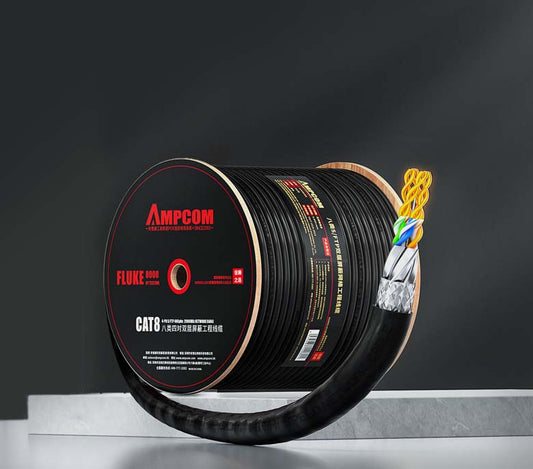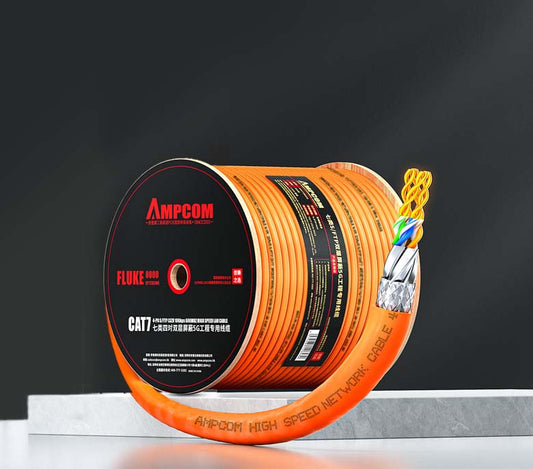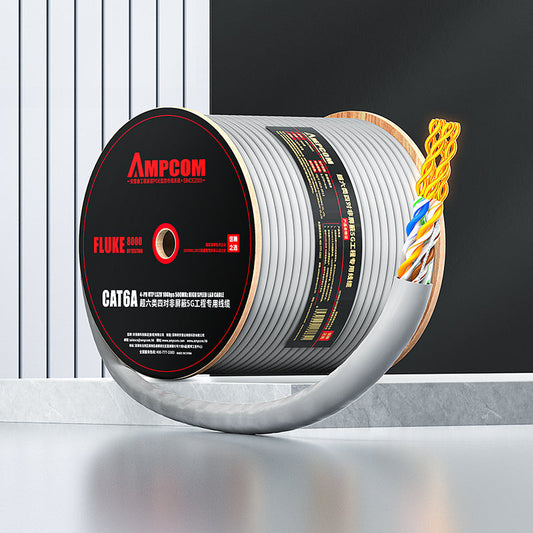Is Your Ethernet Cable’s Wire Gauge Holding You Back? Here’s What You Need to Know
When setting up a network, whether it's for a small office or a large-scale enterprise, one of the most critical decisions you'll make is selecting the right Ethernet cables. One often overlooked factor in this decision is the wire gauge of the Ethernet cables. Wire gauge, measured in American Wire Gauge (AWG), directly impacts the cable’s performance, durability, and overall network reliability. For procurement professionals and engineers, understanding how wire gauge influences data transmission is essential for making the right choice when selecting Ethernet cables.
Wire gauge refers to the thickness of the conductor inside the Ethernet cable, and it plays a crucial role in how well the cable can transmit data. The lower the AWG number, the thicker the wire. For example, 24 AWG is thinner than 22 AWG. The wire’s thickness affects its resistance, signal integrity, and current carrying capacity, which ultimately determines how well the cable performs, especially over longer distances. In this post, we’ll explore the different wire gauges commonly used in Ethernet cables and discuss how they impact network performance, durability, and installation.
The most common wire gauges used in Ethernet cables are 28 AWG, 26 AWG, 24 AWG, 23 AWG, and 22 AWG. Each of these gauges has its own strengths and weaknesses, and understanding the differences is key to selecting the right cable for your network's needs.
How Wire Gauge Affects Ethernet Cable Performance
Wire gauge is crucial in determining the signal integrity of the cable. Signal loss increases with longer cable lengths, especially if the wire is too thin. Thicker wires (lower AWG numbers) provide less resistance and therefore maintain the signal quality over longer distances. This is particularly important in environments that require high-speed data transmission, such as data centers, enterprise networks, or industrial settings where performance cannot be compromised. Thicker wires are also less susceptible to electromagnetic interference (EMI) and radio-frequency interference (RFI), ensuring that your data is transmitted without disruptions.
In general, thicker wires like 22 AWG and 23 AWG can carry signals further without significant loss in performance, while thinner wires like 24 AWG are more suitable for shorter runs or low-demand applications. The choice of wire gauge will depend on the specific needs of your network, including the distance between devices and the amount of data being transmitted.
Wire Gauge Comparison: 28 AWG, 26 AWG, 24 AWG, 23 AWG, and 22 AWG
Each wire gauge has its own optimal use case, and understanding these differences will help you make the best decision when selecting Ethernet cables for your network. Below, we compare the 28 AWG, 26 AWG, 24 AWG, 23 AWG, and 22 AWG cables to understand how each performs in various environments.
| Wire Gauge (AWG) | Diameter | Signal Integrity | Distance Performance | Best Use |
|---|---|---|---|---|
| 28 AWG | 0.321 mm | Good for short distances | Up to 30 meters | Space-saving, low-speed applications |
| 26 AWG | 0.404 mm | Good for short to medium distances | Up to 50 meters | Flexible installations in tight spaces |
| 24 AWG | 0.511 mm | Good for short distances | Up to 100 meters | Home networks, small office setups |
| 23 AWG | 0.573 mm | Improved signal integrity | Up to 120 meters | Office networks, enterprise setups |
| 22 AWG | 0.643 mm | Excellent signal integrity | Up to 150 meters | Data centers, high-performance environments |
| 20 AWG | 0.812 mm | Exceptional signal integrity | Up to 200 meters | Heavy-duty applications, long-distance needs |
| 18 AWG | 1.024 mm | Superior signal integrity, very low loss | Over 200 meters | Heavy-duty, industrial networks, power applications |
As shown in the table, the 28 AWG wire is typically used for short-distance, low-speed applications where space-saving and flexibility are crucial, such as in home networks or temporary setups. The 26 AWG wire offers a balance between flexibility and performance, making it a good choice for installations in tight spaces where space-saving is important but some level of signal integrity is still needed. The 24 AWG cable is a popular choice for residential and small office networks due to its balance between cost, flexibility, and performance. 23 AWG and 22 AWG cables, on the other hand, are used for high-performance applications, such as data centers and enterprise-level networks, where signal integrity and long-distance performance are critical. Finally, 20 AWG and 18 AWG cables are used for industrial applications, high-power networks, and very long-distance connections.
Choosing the Right Wire Gauge for Your Network
The wire gauge you choose should depend on your network's requirements. For short-distance connections with moderate data transfer needs, 24 AWG cables may be sufficient. However, if you’re setting up a long-distance network or a high-performance system where reliability and minimal data loss are crucial, 22 AWG or 23 AWG cables are the better options. 28 AWG cables, while lightweight and flexible, are best for less demanding applications and should be avoided in high-performance settings.
When planning your network, it’s important to balance cost, performance, and durability. Thicker cables like 22 AWG offer long-term benefits in terms of performance and durability, especially in high-demand environments. However, they are typically more expensive than 24 AWG or 28 AWG cables. For most small office or home networks, 24 AWG cables are a cost-effective solution that balances performance with affordability.
In conclusion, wire gauge plays an essential role in the overall performance, signal integrity, and durability of Ethernet cables. For networks requiring high-speed data transfer, long distances, or environments with high interference, 22 AWG and 23 AWG cables are the best choices. For more flexible, short-distance applications, 24 AWG and 28 AWG cables offer a great balance of affordability and performance. Understanding the impact of wire gauge ensures that your Ethernet cables will meet your network’s needs for years to come.
For more information on selecting the right Ethernet cables based on wire gauge and performance requirements, be sure to check out our comprehensive guide on AMPCOM Ethernet Cable Selection.



